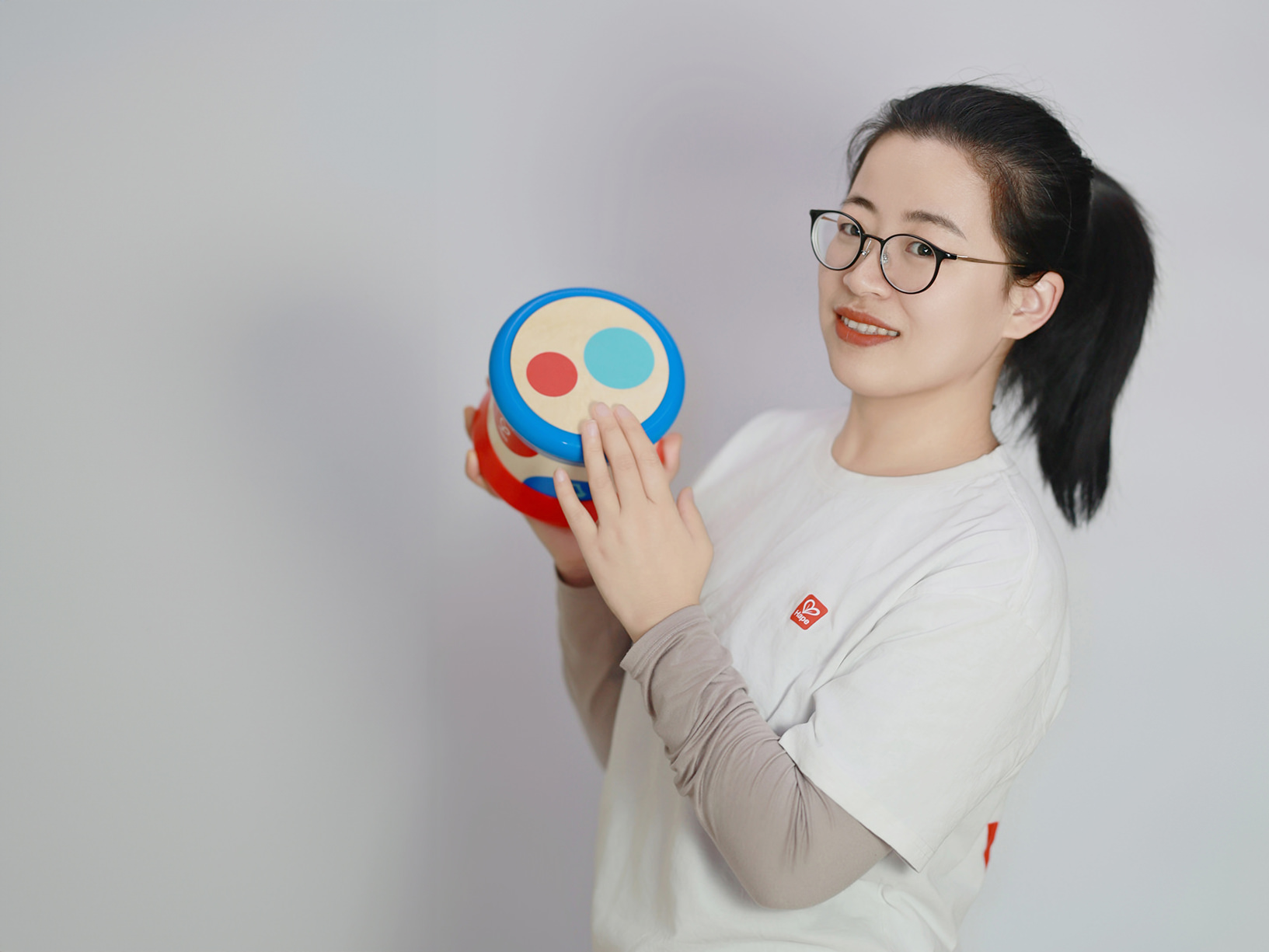Have you ever wondered what goes into designing the perfect children's music toy? Meet the experts who make it happen!
In this feature, we're diving into the world of how music toys are designed for babies, toddlers and preschoolers through the eyes of 2 of our product designers. As experts in their fields, they’ll be sharing their experiences and insights on how they craft children’s music toys that are not just fun but also educational and safe.

First up, we’ll be chatting with Echo, our specialist in infant toy development. Echo has been with Hape for over 6 years, creating children’s music toys and bringing a ton of knowledge and passion to each project.
E: First off, we really want our toys to spark a love for rhythm and harmony that lasts from babyhood right through to adulthood. We do this by using catchy classic tunes, simple sounds and even cool nature noises. Plus, we know baby sensory toys need to be super safe. That’s why we’re all about strict safety standards, making sure our littlest ones have both a fun and safe time playing.
E: When babies listen to music, they’re getting a dose of sounds and rhythms that are really important for understanding language later on. You might see them moving their heads, waving their hands, or even wiggling their whole bodies to the beat. It’s all part of their sensorimotor experience.
So, when we’re designing music toys for babies, we think about this stuff a lot. We aim to help babies grow their sensory skills through loads of playful exploration.
E: These days, parents are looking for more than just nice-sounding music toys for babies– they want something extra. So, we put a lot of thought into making our toys easy for little hands to explore. We get the size and weight just right. Plus, we like to mix up the materials in our toys to give babies all sorts of fun textures to feel and discover.
Next, we’re chatting with Mavis. She’s the brain behind our toddler and preschool toy designs and has been with Hape for over 5 years. What really makes her day is seeing children play, laugh and learn with the toys she’s designed.

M: For toddler music toys, we’re all about exploring rhythm and sound. We mix up different play styles and sounds. Every time a kid plays, they find a new sound, which is a big deal in their musical journey.
For example, with our Pound and Tap Bench, we put balls on the xylophone so when they hit the keys, it makes cool sounds. The banging of the hammer, the balls dropping, their rolling sound, plus the xylophone tunes themselves, it’s all about giving toddlers a whole world of sounds to discover.
M: Our main goal is to provide high-quality sound while also taking care of little ears. We’re constantly working on improving sound quality, but child safety is always at the forefront. All our toys meet strict global decibel standards, which inspires us to innovate with new materials and techniques.
When it comes to technology, electronic music toys for toddlers have lots of potential, but we like to introduce kids to the basics first. This is because we really believe in a child’s natural creativity. We don’t avoid technology, but we use it wisely, always keeping the physical and mental well-being of children as our top priority as we help nurture their creative abilities.
M: At this stage, we’re all about real instruments – think pianos, ukuleles, guitars and harmonicas. We really focus on the details, like making sure our ukuleles and guitars have actual strings and getting the piano tuning just right.
Our designs for preschool music toys are super realistic and have a cool design, usually featuring a red and black colour scheme. We want to take what kids have learned from infant and toddler music toys to the next level, inspiring their creativity and boosting their confidence in music.

M: Our approach to music education is inspired by four renowned methods – Dalcroze, Kodaly, Orff, and Suzuki. Each one emphasises the importance of feeling the music. We focus on key elements like rhythm, tone colour, and creativity.
To make learning even more engaging, we’ve introduced a ‘learn with lights’ feature in our pianos, ukuleles, and harmonicas. It starts with background music to help kids get the feel of the rhythm, followed by light-guided instructions for simple songs. This really helps to boost their confidence and pique their interest in music.
Designing children’s music toys is more than just creating fun playthings – it’s about shaping early learning experiences that last a lifetime.
By blending play, music and learning, Echo and Mavis help children take their first steps into a world filled with rhythm, creativity and self-expression – one musical toy at a time. Together, their expertise brings music into children’s lives in a way that is playful, enriching, and developmentally meaningful.
With every note played and rhythm discovered, these toys inspire creativity, foster learning and ignite a lifelong love for music. If you’re looking to introduce your mini maestro to the joy of music, explore our collection of children’s music toys and let the journey begin.